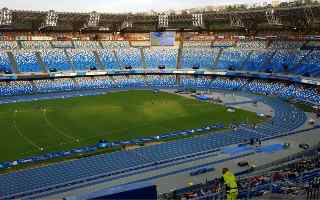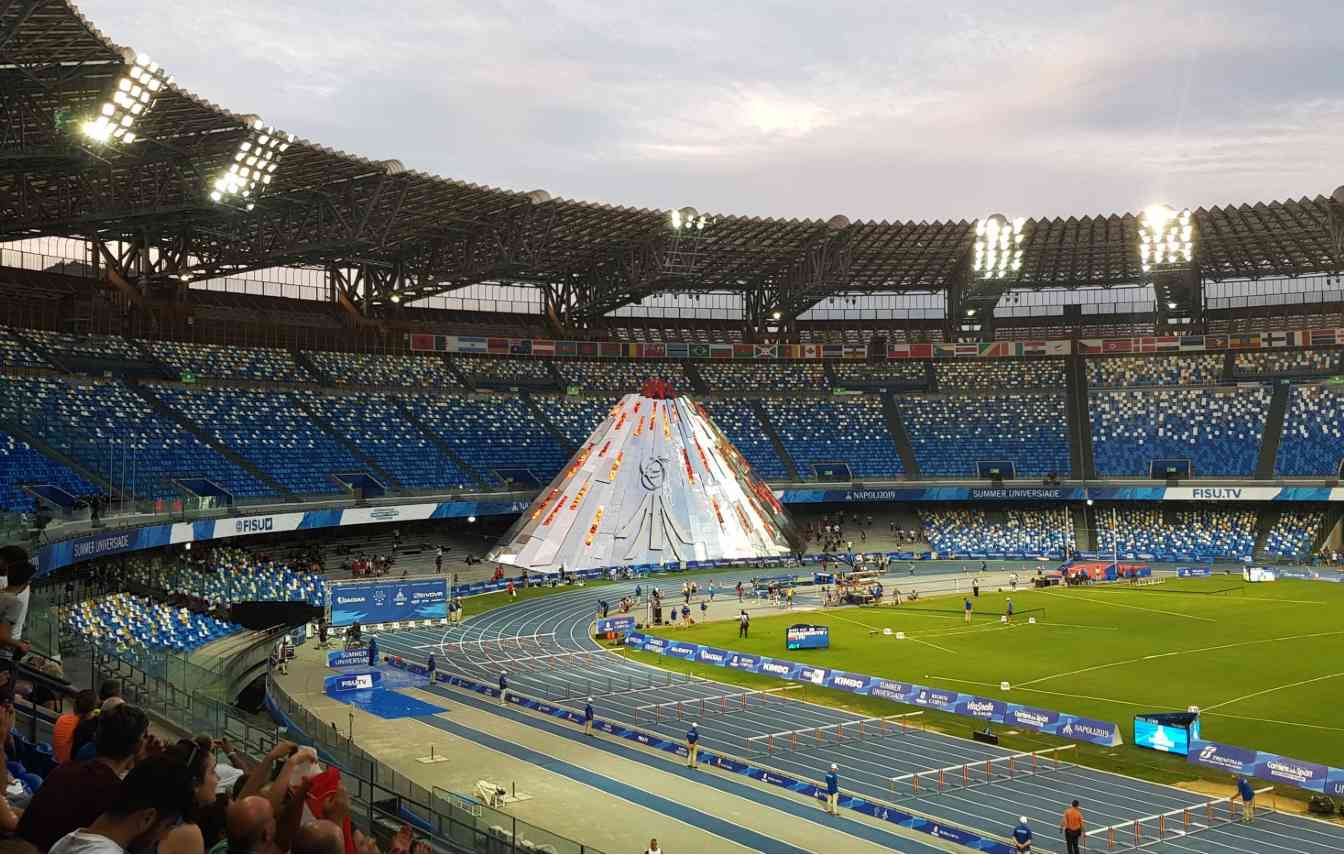Italy: Naples begins its major chase for Euro 2032
source: StadiumDB.com; author: Jakub Ducki
 Naples is entering a key phase in the bid to host the 2032 European Championship. The City Council has approved a set of 12 principles that will form the foundation for the redevelopment of Stadio Diego Armando Maradona.
Naples is entering a key phase in the bid to host the 2032 European Championship. The City Council has approved a set of 12 principles that will form the foundation for the redevelopment of Stadio Diego Armando Maradona.
Advertisement
12 principles that will shape stadium’s future
During the meeting on October 21, Naples councilors approved twelve guidelines that will serve as the starting point for the project documentation for the modernization of the Fuorigrotta stadium. Their scope covers the stadium’s functionality, energy matters, aesthetics, as well as commercial and logistical aspects. The changes concern the stands, the roof, the pitch layout, sustainable environmental solutions, accessibility, and traffic organization around the stadium.
The most important assumptions include: a new configuration of the first ring, creation of skyboxes, field boxes and VIP seating on the central stand, symmetrical centering of the pitch, modernization of evacuation routes and adapting them also for events other than football. A comprehensive reconstruction of sanitary facilities, bars and gastronomy zones is also planned.
A major emphasis has been placed on sustainable development. Naples plans to use the stadium roof surface to build a solar power plant and a rainwater recovery system. According to estimates, it would be possible to obtain over 25 million liters of water annually. In total, up to 27,000 square meters of photovoltaic surface may be created, and the establishment of an REC – Renewable Energy Community – is being considered.
The stadium is also expected to gain a new business and museum layer: up to 30,000 m² of commercial space has been approved, as well as the possible creation of the Maradona Experience
museum. Hotel areas will also be modernized.
An important element will be the reorganization of the external space: restoration and construction of new underground parking lots, new access routes to the pitch area for heavy event vehicles, improvements around Via Tansillo, as well as analysis of noise reduction measures in residential areas located closest to the stadium. The masterplan also foresees the creation of a Ring of Fame
– a modular exhibition dedicated to the greatest figures in the history of the Azzurri.
City stance and commitment to UEFA
The City of Naples emphasizes that the task of the municipality is to approve the technical and economic feasibility project by June 2026. The official statement reads: The Maradona Stadium is part of the city’s heritage and history. This project will make it more modern, safer and more sustainable.
The transformation of the stadium is meant to ensure its readiness to host top-level events but also bring benefits to residents through an attractive, green, multifunctional space.
In the context of Euro 2032, the city notes: Submitting the bid to host Euro 2032 is a challenge we want to take on with ambition and responsibility, offering the city a modern venue capable of generating sporting, cultural and economic value.
 © GaeC86
© GaeC86
Two directions for future stadium
The road to Euro 2032 remains complex. In parallel, an alternative concept from SSC Napoli and owner Aurelio De Laurentiis is emerging. The city has prepared a reconstruction concept with the reopening of the third tier, which would increase the stadium capacity to around 65,000 seats. The project foresees a fully covered stadium and the removal of the athletics track, making the stand layout similar to Maracanã.
At the same time, the club is working on its own design for a brand new stadium in the Poggioreale district. UEFA is expected to review both concepts and clarify the situation in the first week of September. The outcome of this process will be crucial for the final direction of the investment.
Advertisement

 StadiumDB
StadiumDB